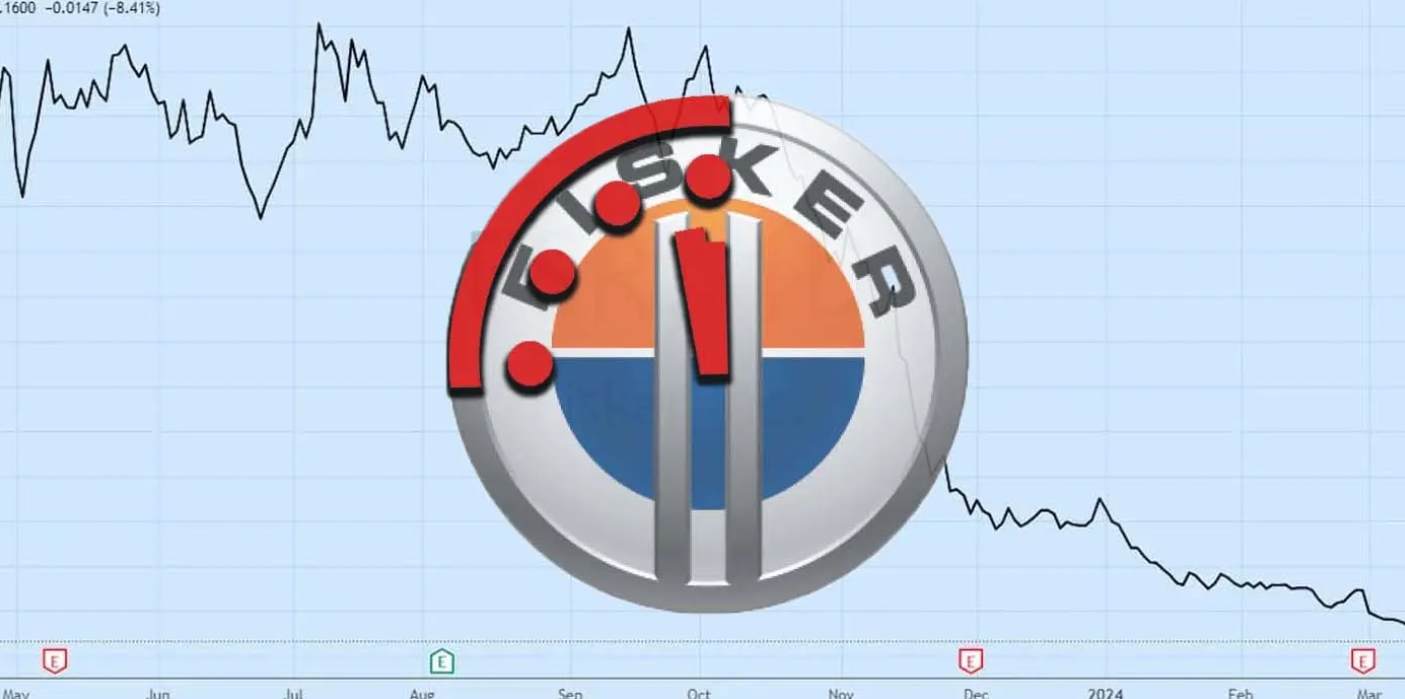The central issue surrounding Fisker Automotive’s bankruptcy essentially revolves around the company’s management of funds, particularly those obtained through a government loan. The firm, which was once touted as a promising force in the electric vehicle market, filed for bankruptcy in 2013 after defaulting on a $139 million federal loan.
The pivotal question that emerged from this situation was how the company, which had been initially granted a $529 million loan by the Department of Energy, ended up in such a dire financial condition. Critics argue that Fisker Automotive’s downfall was primarily due to mismanagement of funds, poor product design, and lack of strategic planning. Furthermore, there were concerns about the government’s role in providing loans to such companies, and whether proper due diligence and risk assessment were conducted.
The aftermath of Fisker’s bankruptcy did not only affect the company itself but also had wider implications on the electric vehicle industry, the government’s loan programs, and taxpayers. The ripple effect of this situation brought about a renewed scrutiny into how federal funds are used to subsidize green technology companies. It questioned the feasibility of supporting such high-risk ventures with taxpayers’ money, particularly when the outcomes are uncertain. However, others argue that such risks are inherent in the process of fostering innovation, and occasional failures should not deter the government from supporting promising technologies.
The investigation into Fisker’s bankruptcy also raised questions about the company’s decision-making and corporate governance. There were concerns about the company’s due diligence during its product development phase, specifically regarding the selection of A123 Systems, a battery supplier that also ended up filing for bankruptcy. Additionally, Fisker’s ambitious business model and rapid expansion plans were seen as contributing factors to its financial downfall.
While discussing Fisker’s bankruptcy, it’s also crucial to analyze the broader context of the electric vehicle industry. Many companies in this sector are relatively new and have yet to turn a profit, making them vulnerable to financial instability. This reality, coupled with the high costs of developing and producing electric vehicles, poses significant challenges for these companies. Despite these hurdles, the industry has also seen substantial growth and innovation, indicating a promising future.
In conclusion, the key question behind Fisker’s bankruptcy is multi-faceted, encompassing issues related to financial management, governmental oversight, industry challenges, and the broader economic implications of supporting green technologies. While Fisker’s story serves as a cautionary tale, it also offers valuable lessons for other companies in the electric vehicle industry and for government bodies overseeing loan programs. With proper risk assessment, robust corporate governance, and strategic planning, the potential for success in this rapidly evolving industry remains high.

Financial Troubles: What Led to Fisker’s Bankruptcy?
Fisker’s bankruptcy story is a tale of financial struggles intertwined with a multitude of contributing factors. The ambitious automotive enterprise, launched in 2007 by Henrik Fisker and Bernhard Koehler, aimed to revolutionize the electric vehicle industry with its Karma plug-in hybrid. However, the reality of high production costs, stiff competition, and technological challenges proved too hard to overcome.
The company’s financial troubles began to surface in 2011 when the Department of Energy (DOE) froze the loan it had awarded to Fisker, owing to the company’s failure to meet certain agreed upon milestones. This decision left Fisker in a precarious financial position, struggling to fund its operations and the production of the Karma.
Additionally, Fisker faced several recalls due to battery problems in its cars, which further tarnished the brand’s reputation and consumer confidence. The bankruptcy of A123 Systems, Fisker’s main battery supplier, only served to exacerbate the situation. This resulted in a halt in the production of the Karma, pushing the company further into financial distress.
The final blow came in 2012 when Hurricane Sandy destroyed more than 300 brand new Karmas at a port in New Jersey, leading to a loss of approximately $30 million. Unfortunately, Fisker’s insurance company refused to cover the loss, pushing the company deeper into financial turmoil.
Despite numerous attempts to save the company, including seeking potential buyers and investors, Fisker eventually filed for bankruptcy in November 2013, marking the end of a once-promising electric vehicle startup. The downfall of Fisker serves as a stark reminder of the challenges and uncertainties that come with venturing into the high-risk, high-reward world of electric vehicles.
Management Decisions: Key Choices That Contributed to the Collapse
Management decisions play a significant role in determining the success or downfall of a business. Often, key choices that contribute to a collapse are a result of poor judgment, lack of foresight, and inability to adapt to changing trends. One major decision that can lead to a collapse is the failure to invest in innovation. In an ever-evolving market, businesses that fail to keep up with the latest trends can quickly become irrelevant. Companies that do not prioritize technological advancement or disregard the need for modern marketing techniques may find themselves struggling to compete.
Another detrimental decision is the lack of risk management. Every business decision carries a certain amount of risk. However, the failure to identify, assess and control these risks can lead to major setbacks. For example, a company that expands too quickly without a solid financial plan can easily exhaust its resources and collapse under the weight of its own ambitions.
A third critical decision involves human resources. The people within an organization are its most valuable assets. If management fails to recruit, retain and motivate skilled employees, the business can suffer from high turnover rates, low morale, and ineffective operations. Equally important is the decision to ignore or mishandle internal conflicts. Unresolved issues can fester, leading to a toxic work environment and decreased productivity.
Lastly, neglecting customer satisfaction is a fatal mistake. Companies that fail to listen to their customers, ignore feedback, or do not prioritize high-quality service can suffer a loss of reputation and a decline in sales.
In conclusion, management decisions are the backbone of any business. The failure to make sound decisions in crucial areas such as innovation, risk management, human resources, and customer satisfaction can lead to a collapse. Therefore, it is essential for managers to make informed and strategic decisions to ensure the longevity of their organization.

Market Conditions: How External Factors Played a Role
Market conditions are significantly influenced by a variety of external factors. These factors, often beyond the control of individual businesses, can drastically affect the performance, strategies, and outcomes of companies in the marketplace. For instance, economic conditions play a critical role in shaping the business landscape. During periods of economic recession, consumer spending tends to decrease, which can lead to reduced sales and revenues for businesses. Conversely, during periods of economic growth, consumer spending typically increases, which can boost business performance and growth.
Political stability is another external factor that has a significant impact on market conditions. In stable political environments, businesses can operate with a degree of certainty and predictability, which can foster investment and economic activity. On the other hand, political instability can create uncertainty and risk, which can deter investment and hinder business activity.
Technological advancements are yet another external factor that can shape market conditions. Innovations in technology can create new opportunities for businesses, such as the development of new products or services, or the opening of new markets. However, they can also pose challenges, as businesses must adapt to these changes or risk being left behind.
Cultural and social trends can also influence market conditions. Changes in consumer attitudes and behaviors can create new demands in the marketplace, which businesses must respond to in order to remain competitive.
Additionally, environmental factors, such as climate change and natural disasters, can affect market conditions. These factors can impact the availability and cost of resources, as well as influence consumer behavior and regulatory policies.
In conclusion, numerous external factors play a role in shaping market conditions. Understanding these factors and how they impact the business environment is crucial for businesses to navigate the marketplace effectively.
Impact on Stakeholders: Who Was Affected by Fisker’s Downfall?
The downfall of Fisker Automotive, a pioneering electric vehicle manufacturer, had profound implications for a broad spectrum of stakeholders. Firstly, it caused significant financial distress to its investors, who had poured about $1.2 billion into the company expecting substantial returns, but were left with staggering losses when the company filed for bankruptcy.
The employees of Fisker were affected as well, as they faced job losses and financial instability. Additionally, the collapse of Fisker was a major setback for the United States Department of Energy (DOE), which had loaned the company $529 million under the Advanced Technology Vehicles Manufacturing Loan Program to spur the development of innovative, fuel-efficient vehicles.
Moreover, customers who had bought Fisker vehicles were left with expensive cars that had little support for maintenance and repairs. Suppliers and vendors, who had furnished parts and services to Fisker, were also hit hard as they had to write off their receivables and suffered from disrupted operations. The local communities where Fisker had operations suffered economic impacts as well, in the form of lost jobs and reduced economic activity.
Furthermore, Fisker’s downfall had a ripple effect across the broader electric vehicle industry. It created a perception of risk and uncertainty around electric vehicle startups, potentially making it harder for these firms to raise capital and gain market acceptance. It also served as a cautionary tale for government agencies, investors, and others about the potential pitfalls of investing in unproven technologies and business models.
In conclusion, Fisker’s downfall affected a diverse array of stakeholders, including investors, employees, the government, customers, suppliers, local communities, and the broader electric vehicle industry. The impacts ranged from direct financial losses to broader effects on perception and confidence in the electric vehicle sector.

Lessons Learned: What Can Other Startups Take Away from Fisker’s Experience?
Fisker Automotive’s experience offers valuable insights that can be beneficial to other startups. The company, despite its initial success and potential, eventually filed for bankruptcy due to several reasons. These included poor strategic decisions, inadequate product quality, and lack of a clear market understanding.
One key lesson to glean from Fisker’s journey is the importance of robust and thorough product testing. An issue with the vehicle’s battery led to numerous recalls, severely damaging the brand’s reputation and customer trust. Therefore, startups should prioritize quality assurance and product testing to avoid similar pitfalls.
Another observation from Fisker’s saga is the need for strategic business decisions, particularly in financial management and resource allocation. Fisker faced critical financial problems due to overspending on production and underestimating the cost of creating a new brand in a highly competitive market. Startups need to have financial discipline, accurate forecasting, and realistic projections to ensure sustainable growth.
Moreover, Fisker’s experience underscores the importance of understanding the market and the target audience. Fisker’s misjudgment of the consumer demand for their luxury hybrid vehicle in a market dominated by established brands resulted in lower than expected sales. As such, startups must conduct in-depth market research and have a clear understanding of their target audience’s needs and expectations.
Lastly, Fisker’s story stresses the significance of adaptability and resilience. The company’s inability to adjust to unfortunate situations such as the battery supplier’s bankruptcy and the loss of a significant number of vehicles during Hurricane Sandy, significantly impacted its operations. Hence, startups should be prepared for uncertainties, develop contingency plans, and be flexible enough to adapt and overcome obstacles.
In conclusion, Fisker’s experience serves as a cautionary tale for startups, emphasizing the importance of product quality, strategic decision-making, market understanding, and adaptability.
